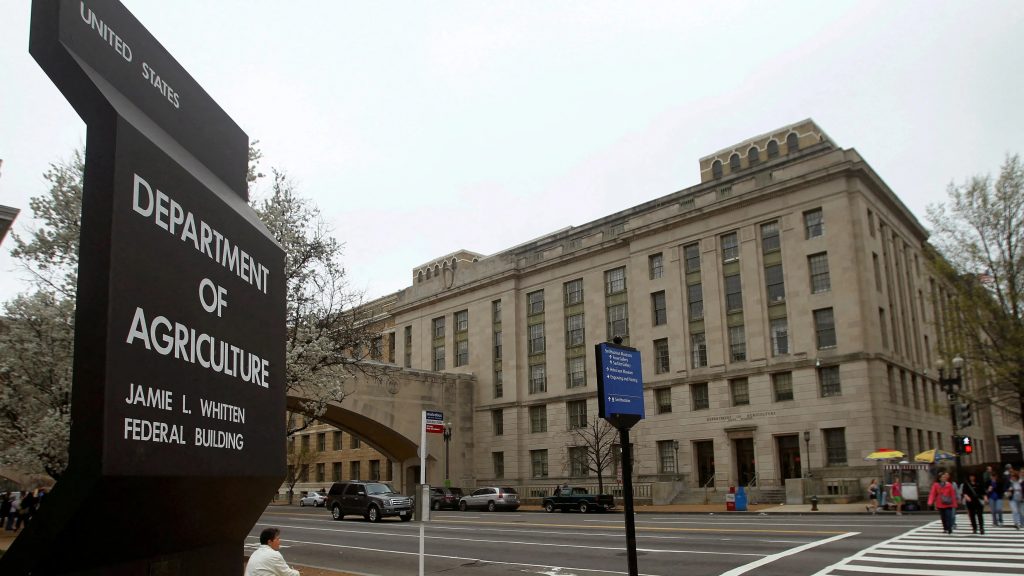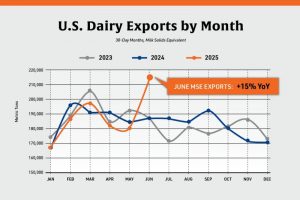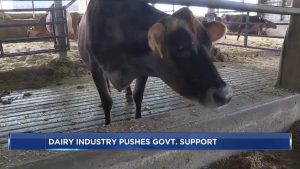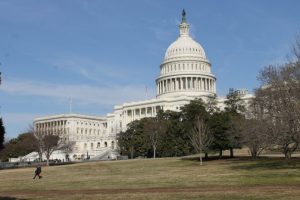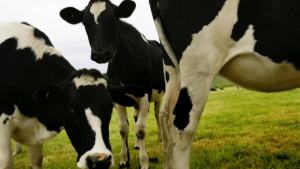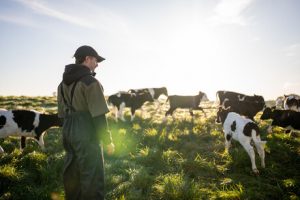
In 2016, Tillman County, a politically deep red area in southwest Oklahoma with a population of less than 7,000 and dropping, lost its hospital. Emergency services calls skyrocketed, and health outcomes deteriorated.
Trey Caldwell, the area’s Republican state representative, said his office found at least three people died after long ambulance rides. “They would have survived,” he said, “if they could have gotten immediate emergency care right then and there.”
But hope for the community dotted with dairy farms arrived in 2023, when construction started on a new hospital. Breaking ground required state and federal law changes, funding from former President Joe Biden’s administration and, perhaps most importantly, seed money from the U.S. Department of Agriculture’s Rural Development agency.
“The last thing you want to do is saddle that hospital with a lot of debt,” Caldwell said. “That USDA funding mechanism was massive. It really helped move the needle.”
But former agency officials worry fewer projects like the hospital could be built in rural America as the Trump administration and Elon Musk’s DOGE have targeted Rural Development for large staffing cuts. With fewer employees in rural communities assisting local leaders with their funding needs, there is concern Trump’s chainsawing of the federal workforce could leave rural America without a robust safety net.

“We invest in so many businesses in rural America, and when you have fewer businesses, you have fewer jobs and fewer economic opportunities,” said Basil Gooden, who led Rural Development during Biden’s last year in office. “It’s not going to happen overnight. It’s going to take a little while before people realize things have really broken.”
In a statement, the USDA said Biden officials left the USDA “in complete disarray, including hiring thousands of employees with no sustainable way to pay them. … Fortunately, President Trump is taking strong action to support farmers.”
Rural Development is how the federal government ensures rural areas aren’t left behind as those residents move to cities for higher living standards. It funds broadband infrastructure and helps lifelong renters buy homes in population-losing communities.
Former agency officials said keeping rural areas attractive is essential to national security. Consumers have grown accustomed to the convenience of fully stocked grocery store shelves and freezers, and the country’s fuel supply increasingly uses ethanol grown in Midwestern corn fields. To keep the supply chain running, some people have to live in areas often bereft of modern-day necessities, such as hospitals or high-speed internet.
The federal government has long invested in rural farming communities. But the funding has nosedived
Investing in rural communities is critical to ensure a long-term agricultural workforce, especially as the average age of U.S. farmers increases rapidly. That means the people growing America’s food and fuel need access to quality grocery stores, childcare and health care.
“Farming ranks among the most hazardous occupations, making access to emergency medical services and hospitals a critical infrastructure need,” said Bette Brand, who led the agency during Trump’s first term. “Ensuring that rural families can live and work safely is fundamental to maintaining a stable food supply and sustaining agricultural productivity.”
The number of projects Rural Development has funded each year has trended downward for years, but it began to nosedive in 2021, agency data shows. Biden officials pointed to the loss of about 2,000 agency employees, out of a total of about 6,000, during the first Trump administration.
“Our investments have gone down because we just don’t have the staffing that we used to have,” Gooden said. “We don’t have the people on the ground. That’s very detrimental.”
Gooden hired about 800 more staffers during his tenure, he said, but they were probationary employees, the classification the administration has targeted for dismissal. More than 500 of the employees were let go in the administration’s mass terminations at the USDA in February.
To date, more than 1,500 Rural Development staffers have left, the USDA said — likely leaving the agency with fewer staffers than at the end of the first Trump administration. That’s roughly 10% of the 15,000 total USDA employees who have left the department.
Brand said the agency made meaningful gains in efficiency in Donald Trump’s first term. Continuing to improve efficiency, DOGE’s stated goal, is important, she said, but the recent job cuts risk destabilizing rural communities, which have largely supported Trump’s candidacies.
“There’s a persistent undercurrent of stress among federal employees that’s slowing the pace of loans and program implementation,” she said. “That doesn’t mean change isn’t needed, but the way it’s executed matters.”
She likened the agency to an ocean liner that’s left port. “It’s as if the agency is mid-voyage — charting a course and making progress — and someone dropped anchor without warning,” she said. “You don’t stop a ship of that size without consequences. The abruptness disrupts momentum, strands key personnel and risks throwing off balance the very systems rural communities rely on. Reform is necessary, but if the process causes collateral damage to people who are simply doing their jobs, it could create long-term harm.”
Brand added reforms must produce lasting results to justify the disruption.
“If you’re going to put the agency — and the communities it serves — through this kind of turbulence, the outcomes better be meaningful and durable,” she said. “Otherwise, the cost to individuals and local economies may never be recouped.”
In an early March speech, Brooke Rollins, Trump’s agriculture secretary, announced she would release a plan to restore rural prosperity in the “coming weeks.” No plan has been released yet, but she said it would improve the agency’s efficiency.
On Trump’s 100th day, Rollins released her own list of accomplishments, which included taking “leadership to make rural America prosper again.” It linked to her previous statement about her unreleased plan. In a statement to Investigate Midwest, the USDA said “more information … will be released soon.”
Rollins also said the USDA would “invite the private sector” to participate in the endeavor, and she specifically mentioned satellite internet. Musk owns Starlink, which provides satellite internet. The White House has said Musk has pledged to avoid potential conflicts of interest, according to NBC News.
Across the country, only 55% of farms have broadband access, and Starlink has been pushed as an alternative in rural areas because it relies on satellites instead of traditional cable infrastructure. But the federal official who led the government’s broadband program pilloried Starlink in a resignation letter in March, according to Politico.
“Stranding all or part of rural America with worse internet so that we can make the world’s richest man even richer is yet another in a long line of betrayals by Washington,” the official, Evan Feinman, wrote.
Asked if the USDA saw a conflict of interest in Rollins pushing satellite internet, the department did not answer directly. It said its programs are “technology neutral” and it will allow communities to decide what technology “is best for their project.”
In her March speech, Rollins added her plan will “restore more power to … local leaders who know (their) communities better than anyone in Washington.”
It’s unclear how Rollins’ plan differs from Rural Development’s existing role. The agency was designed to spur private investment in underserved areas, with the USDA acting as a lender of last resort that cannot compete with banks. Former officials said local communities largely drive what projects are funded.
‘We are a place that is often forgotten’
The federal employees working in state Rural Development offices are also members of the communities in which they operate.
For instance, in South Dakota, local developers have received grants to update rural water systems. “It’s South Dakotans doing the work, and it’s South Dakotans who care about making sure that they’ve got clean water for their community,” said Nikki Gronli, a Biden political appointee who led the agency’s state office.
“We are a place that is often forgotten,” she added. “I think the best people to do the work here are South Dakotans because they care. It’s personal for them. I don’t see some large developer coming from Chicago or L.A. that’s going to want to invest in South Dakota with our small population.”
Out of 39 people in the South Dakota office, nine were fired in February and a few others have accepted retirement offers, Gronli said. In a matter of months, the office has been reduced to 26 staffers.
Recently, Rollins said federal workers who assist farmers with direct loans would not be terminated, according to the North Dakota Monitor. Employees with the Farm Service Agency, a separate USDA division from Rural Development, or those on the “frontline or with the farmers” would be spared, she said.
When asked if Rural Development was included in the definition of “front line,” given its importance to farmers’ lives, the USDA pointed to an April 22 declaration in which Rollins exempted “national security and public safety” positions from the hiring freeze.
“As the memo states, ‘Food Security is National Security,’ and Secretary Rollins will not compromise this critical work,” the USDA said in a statement.
The memo lists dozens of positions that are exempted, including firefighters and food inspectors. None are related to Rural Development.
First Trump administration instituted agency cuts
Trump has often declared his love for farmers and rural communities, but, like now, his first administration targeted Rural Development for job cuts.
Months into the first Trump administration, then-Agriculture Secretary Sonny Perdue proposed restructuring the USDA, including abolishing the undersecretary for Rural Development position.
In the USDA hierarchy, an undersecretary is just below the department’s top leader. Several undersecretary positions exist, and they can be seen as commitments to important aspects of the USDA’s mission. Undersecretaries oversee farm production, food safety and natural resources, for example.
Perdue established an undersecretary of international trade, a priority of the first Trump administration. At the time, advocates worried the move signaled less investment in rural America.
The administration’s hiring freeze, implemented in January 2017, also affected Rural Development, and the agency reduced headcount by consolidating administrative duties, such as human resources.
Leadership at the agency turned over a few times before Brand was tapped to head it in early 2020, right before the COVID-19 pandemic started. “That leadership transition made it difficult for us to stay on target on some of these bigger priorities,” she said.
In her new role, Brand fielded complaints from state offices. “You would hear it quite often from states that said, ‘Well, I need more people. I need more help,’” she said. “But the real question was whether the issue was staffing levels or whether better technology and systems could help existing staff be more effective.”
She said modernizing operations was key to meeting demands. In her opinion, if IT systems were stronger, field staff could spend more time in the field.
When the pandemic forced the department to work remotely, Brand, who worked for decades in the farm credit industry, worried about customer service, but, she said, “our customers didn’t notice a difference.”
Although Trump and Musk have alleged that many federal employees are lazy, Brand had the opposite experience during Trump’s first term. During the pandemic, one employee in a rural area did not have high-speed internet at his house. However, he could connect to broadband at the end of his long driveway. He built a shack there so he could work remotely, Brand said.
Trump actions reverse Biden staffing additions
When Biden officials took over the agency, they heard a similar complaint as Brand: “One of the things I heard right away from one of our veteran employees was we need more people,” said Gronli, South Dakota’s former state director.
As the pandemic still raged, Robert Lyons, a political appointee in Washington, joined the USDA’s office in late 2021. Following the previous administration’s reduction in staff, “there were less people doing more work,” he said. “Everyone was rolling up their sleeves and doing what felt like two to three jobs.”
Many employees did not document their overtime, Lyons said. “We had to tell them, ‘Hey, we need Congress to understand that when they allocate funding, this is the amount of work that’s actually going into processing these grants and meeting with the community,’ ” he said.
Fewer staffers, especially at the state level, could translate into frustrating experiences on the ground.
Bert Cunningham, the city manager of Bowie, a town of about 6,000 in north Texas, said he recently applied for a grant to extend a waterline. He had little personal interaction with agency employees, which delayed the process as he tried to navigate the agency’s website. “It’s all email with Rural Development,” he said.
The attractive part is that the USDA offers better terms than banks or other lenders, Cunningham said. It could forgive up to 40% of a loan, he said.
Eventually, Cunningham found an engineering firm that frequently works with the USDA. He said that approach has been more successful.
In the last year of Biden’s presidency, the agency pushed to hire more workers in state offices. Many of them were younger workers who, the thought was, would become the next generation of Rural Development leaders as USDA’s older workers naturally retired.
After Trump was elected, members of his transition team asked Rural Development leaders questions focused on its workforce: How many worked remotely? Where were they located? In the opinion of Gooden, Biden’s last head of Rural Development, the questions were not focused on the agency’s mission.
“That was surprising to me,” he said. “Whenever I go into an organization, I want to know what keeps folks up at night.”
Soon after inauguration day, Trump officials illegally placed a freeze on funding that Congress, the branch of government that controls America’s purse strings, had appropriated. The flow of Rural Development funding stopped.
As payments to farms stopped, state offices had little information to share. In response to the rejection of a reimbursement payment for a Maryland farm in early February, a Rural Development staffer said, “We will need to wait and see if the hold will be lifted, for now we cannot process the reimbursement,” according to records submitted in a lawsuit against Trump’s funding freeze.
On April 15, a judge ruled the USDA’s freeze was illegal and ordered funding to resume. At a May 7 Congressional hearing, Rep. Rosa DeLauro, a Connecticut Democrat, said funding for several programs, including for broadband, were still frozen. Rollins did not dispute it.
She said the USDA was complying with court orders and funding for many programs would be made available by the end of May.
Proposed cuts to Medicaid could imperil new hospital
Oklahoma has long struggled with health care access. By 2020, Oklahoma had the second-highest uninsured rate in the country, according to Oklahoma Watch, and Tillman County had one of the highest uninsured rates in the state. About 18% of its several thousand residents had no insurance.
The first step, then, in bringing a new hospital to the area was Oklahoma’s expansion of Medicaid access. In June 2020, voters approved a ballot initiative that increased how much a family could make and still be eligible for the program. Since 2021, an additional 330,000 people have received benefits, according to the state.
Expanding Medicaid was a “godsend” for rural hospitals, said Rich Rasmussen, the Oklahoma Hospital Association’s president. It opened up a new revenue stream, as the state now reimburses hospitals for care at a level closer to private insurance. “Medicaid has the ability to close the gap for these rural hospitals,” he said.

But another obstacle presented itself at the federal level, said Caldwell, the Oklahoma state representative.
Because facilities in rural areas primarily serve small populations with many low-income and senior patients, they often require federal grants to remain operable. To qualify for the funding, the facilities must be designated as “critical access hospitals.” They need to provide 24/7 emergency care. They also need to be at least 35 miles from another critical access hospital.
The hospital’s location was too close — by several hundred feet, Caldwell said.
“We started looking at all the loopholes about the road requirements,” he said. “We started putting together a plan.”
He lobbied James Lankford, Oklahoma’s Republican U.S. Senator, who began pushing for a rule change, Caldwell said. Chuck Schumer, the current Senate minority leader for the Democrats, also advocated for the Centers for Medicare and Medicaid Services to loosen its rules, as rural New York hospitals had faced similar problems, according to his office.
In 2022, CMS clarified the distance requirement for critical access hospitals. Originally, hospitals needed to be at least 35 miles apart via a “primary road.” The definition was narrowed down to be more specific, which allowed the future hospital in Tillman County to be eligible for federal funding.
At the same time, revenue streams to build the hospital were secured.
Caldwell and a few other state representatives shepherded legislation that increased funding for rural hospitals. Money from the American Rescue Plan Act, a Biden economic stimulus to address the COVID-19 pandemic, was also tapped.
U.S. Rep. Tom Cole, a Republican that represents Tillman County and chairs the powerful appropriations committee, wrangled $6 million for the $15 million project from Rural Development. The agency’s state lead, Ken Corn, a Biden appointee and a former state senator, was also a “huge help,” Caldwell said. Corn declined to comment.
Cole said the state Rural Development office was instrumental in jumpstarting the hospital.

“I’m hardly an advocate for the Biden administration,” he said, “but the local people that we had working in the ag department were critical to this. Oklahoma is not an area that Joe Biden was going to do particularly well in, and yet the USDA stepped up.”
Oklahoma has voted for Trump by a two-to-one margin three times. His support in Tillman County has been even greater.
Caldwell said it’s his understanding the hospital’s construction has not been affected by the Trump administration’s funding freeze. Comanche County Memorial Hospital, which will run the new Tillman County facility, said the project “remains fully supported.”
But another Trump initiative could affect the hospital’s long-term viability.
Trump has advocated for slicing Medicaid funding to pay for tax cuts for the wealthy. On Monday, House Speaker Mike Johnson released the GOP’s tax plan, which includes Medicaid cuts. The nonpartisan Congressional Budget Office estimated 8.6 million people would lose health care under the proposal, according to the Associated Press.
If Medicaid is slashed, that would erase a significant income source for all hospitals, impact their financial sustainability and scuttle any new projects under development, Rasmussen said. Not only would health care access suffer, but local communities would lose many jobs, further hurting their economies.
“These small hospitals would not be able to survive without that program,” he said.
Asked about cutting Medicaid, Caldwell, who chairs the state’s appropriations committee, said it was a significant concern because the state would face a budget shortfall.
Medicaid access is “in our state constitution,” he said. “If the feds pull back, we will be legally obligated to make it whole. We’ll have to find cuts in other spots of the budget.”
Speaking before the GOP’s budget was released Monday, Cole said reining in government spending was necessary to deal with the government’s budget deficit. The potential effect on the Tillman County hospital “depends on how the cuts are done,” he said.
“Everybody worries about” cuts to Medicaid, Cole said, “but this gets down to focusing on things that are essential, and I’m comfortable that that’s what we’ll do.”
Comanche, the hospital, said Medicaid cuts would have a “minimal” effect. “A significant portion of Tillman County’s population is eligible for Medicare, which is reimbursed under a different structure,” a spokeswoman said. “As a result, the hospital’s financial outlook remains stable.”
While Congress debates Medicaid cuts — and the potential fate of the Tillman County hospital — Caldwell takes pride in the work he and others did to revive a hospital. He drove by it recently, and the construction “warmed my heart,” he said.
“It’s going to save people’s lives,” he said. “There are going to be people over the next 50 years who get to spend extra time with their loved ones because that hospital is there.”
You can now read the most important #news on #eDairyNews #Whatsapp channels!!!
🇺🇸 eDairy News INGLÊS: https://whatsapp.com/channel/0029VaKsjzGDTkJyIN6hcP1K
